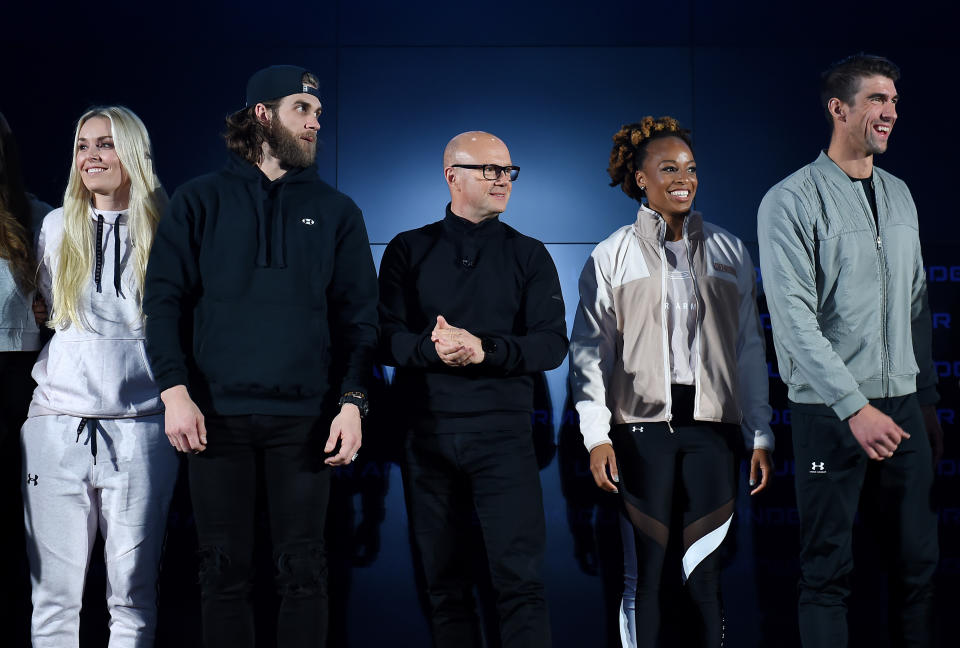Analyst: Under Armour has 'peaked' in America
On Tuesday, Nike issued a warning that the coronavirus crisis will have a “material impact” on its business in China, where its sales jumped 23% in the second quarter to $1.8 billion. Nike (NKE) has temporarily shut down half of its Nike brand stores in China as the virus spreads.
Coronavirus is also likely to weigh on Under Armour (UA), which has also seen great gains in China recently. (Under Armour doesn’t break out its China sales, but Asia-Pacific has been its biggest growth market in many recent quarters.)
The difference is that Nike has America to fall back on; Under Armour sales aren’t growing at home.
While sports apparel brands like Nike, Adidas (ADDYY), and Lululemon (LULU) all grew their sales in the U.S. last year, Under Armour saw its U.S. sales decline. Under Armour’s North America sales have declined five quarters in a row; the last time the brand saw growth in the U.S. was Q2 2018.
And BMO Capital Markets analyst Simeon Siegel doesn’t think the picture is going to get better.
“At the end of the day, Under Armour probably has meaningful opportunity internationally, but it looks like they’ve hit a peak in the U.S.,” Siegel says. “This is not a broken brand story... it just seems that they’ve peaked.”
No longer a growth story
Under Armour’s problem on its home turf isn’t about lack of awareness of its brand. American consumers know Under Armour, and are passing it over for other brands. It simply isn’t a growth story anymore in the U.S., after years of being a challenger underdog on a (26 consecutive quarters of 20% revenue growth) hot-streak.
Under Armour’s biggest mistake was sitting out the athleisure boom and sticking to its identity as a performance brand; consumers have instead flocked to fashionable sportswear, which has been a boon for Adidas and Lululemon.
But Under Armour also hasn’t quite figured out footwear, and its biggest bet in sneakers, a Stephen Curry basketball sneaker line, has been hurt by the overall decline in performance basketball shoe sales. (And Curry has sat out the current NBA season with an injury.)
Siegel also points to star athlete endorsers as a disadvantage for Under Armour against Nike and Adidas: “We know the people associated with these brands. And if you have larger sales, you have a larger budget.”
But that argument is less convincing, considering that Under Armour does have a very strong stable of athlete endorsers, including Steph Curry, Bryce Harper, Clayton Kershaw, Tom Brady, Dwayne “The Rock” Johnson, Jordan Spieth, Lindsey Vonn, Cam Newton, and Michael Phelps.
It’s more likely that Under Armour’s strong endorsers have not been able to resuscitate the brand’s cool factor in America. Under Armour did launch a new ad campaign for 2020 with the tagline, “The only way is through.”

Frisk in the hot seat
So what should the company do next? Siegel believes Under Armour should focus on its financials.
“I think at this point, the margin is the opportunity,” he says. “You want to build a healthier company, you want to recapture that profitability, but that also has to acknowledge that the revenue base is no longer a growth stock.”
Under Armour lost money in 2017 and 2018. For fiscal 2019, it has projected a return to slight profit, with outlook of $230 million. Profit margins have also begun to improve at last in the past two quarters.
It will fall on new CEO Patrik Frisk, who took the helm from founder Kevin Plank in January, to keep driving better margins. Frisk joined Under Armour as president in 2017 from the shoe brand Aldo.
He has his work cut out for him. Under Armour reports 2019 Q4 earnings on Feb. 11.
—
Daniel Roberts is an editor-at-large at Yahoo Finance and closely covers sports business. Follow @readDanwrite on Twitter.
Read more:
Under Armour could make a big comeback in 2020, says one bullish note
Here’s everything wrong at Under Armour
The case for — and against — Under Armour selling itself
Nike, Under Armour have both faced #MeToo scandals in 2018
Top athlete endorsers have not been enough to help Under Armour

 Yahoo Finance
Yahoo Finance 
